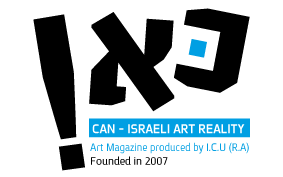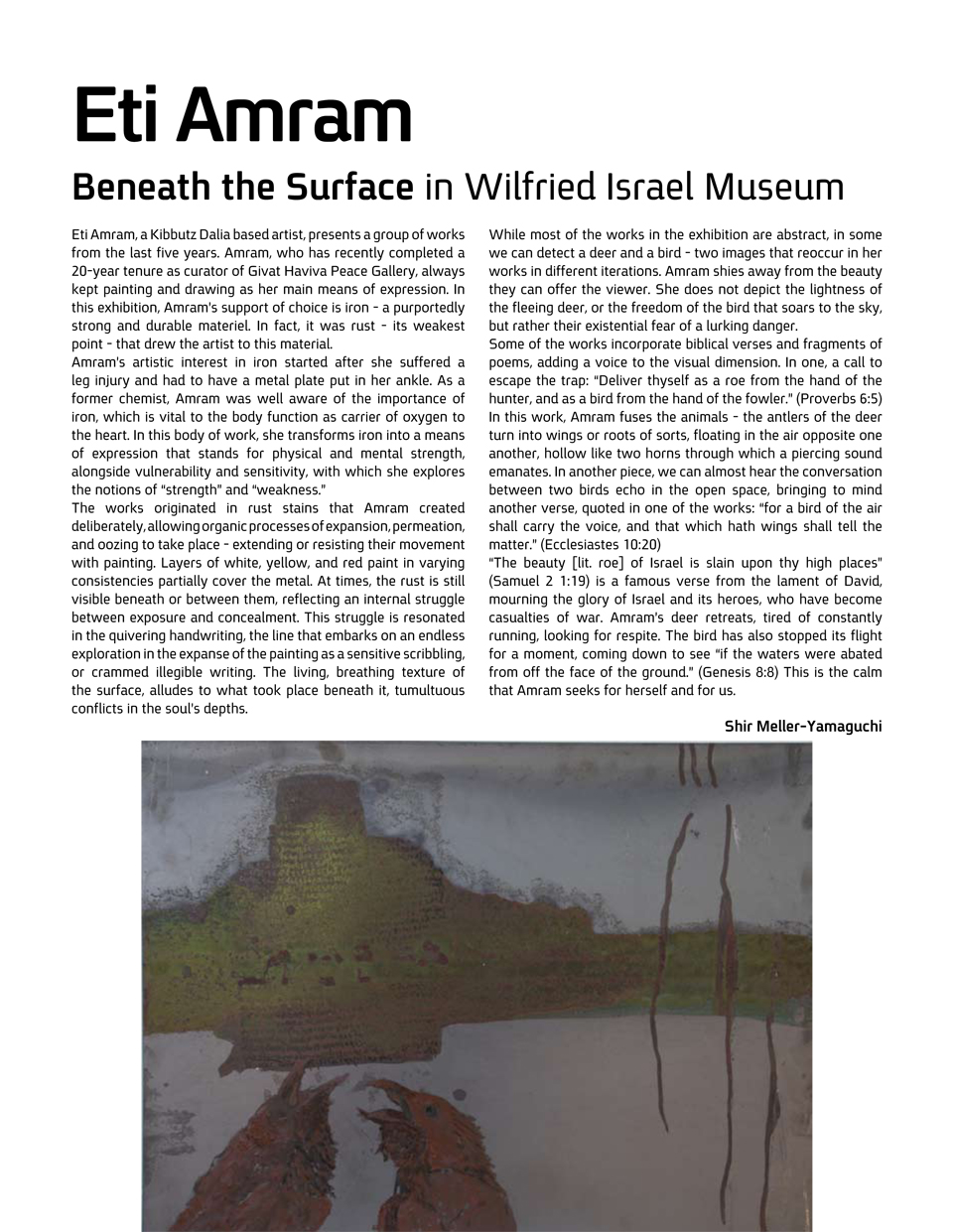
| Home Page | Editor Notices | Museums | Galleries | Publication | Donation | Contact Us |


 | |||||||||||||||
| |||||||||||||||


| |||||||||||||||
| Eti Amram / Beneath the Surface in Wilfried Israel Museum ? |
Eti Amram, a Kibbutz Dalia based artist, presents a group of works from the last five years. Amram, who has recently completed a 20-year tenure as curator of Givat Haviva Peace Gallery, always kept painting and drawing as her main means of expression. In this exhibition, Amram’s support of choice is iron – a purportedly strong and durable materiel. In fact, it was rust – its weakest point – that drew the artist to this material. Amram’s artistic interest in iron started after she suffered a leg injury and had to have a metal plate put in her ankle. As a former chemist, Amram was well aware of the importance of iron, which is vital to the body function as carrier of oxygen to the heart. In this body of work, she transforms iron into a means of expression that stands for physical and mental strength, alongside vulnerability and sensitivity, with which she explores the notions of “strength” and “weakness.” The works originated in rust stains that Amram created deliberately, allowing organic processes of expansion, permeation, and oozing to take place – extending or resisting their movement with painting. Layers of white, yellow, and red paint in varying consistencies partially cover the metal. At times, the rust is still visible beneath or between them, reflecting an internal struggle between exposure and concealment. This struggle is resonated in the quivering handwriting, the line that embarks on an endless exploration in the expanse of the painting as a sensitive scribbling, or crammed illegible writing. The living, breathing texture of the surface, alludes to what took place beneath it, tumultuous conflicts in the soul’s depths. While most of the works in the exhibition are abstract, in some we can detect a deer and a bird – two images that reoccur in her works in different iterations. Amram shies away from the beauty they can offer the viewer. She does not depict the lightness of the fleeing deer, or the freedom of the bird that soars to the sky, but rather their existential fear of a lurking danger. Some of the works incorporate biblical verses and fragments of poems, adding a voice to the visual dimension. In one, a call to escape the trap: “Deliver thyself as a roe from the hand of the hunter, and as a bird from the hand of the fowler.” (Proverbs 6:5) In this work, Amram fuses the animals – the antlers of the deer turn into wings or roots of sorts, floating in the air opposite one another, hollow like two horns through which a piercing sound emanates. In another piece, we can almost hear the conversation between two birds echo in the open space, bringing to mind another verse, quoted in one of the works: “for a bird of the air shall carry the voice, and that which hath wings shall tell the matter.” (Ecclesiastes 10:20) “The beauty [lit. roe] of Israel is slain upon thy high places” (Samuel 2 1:19) is a famous verse from the lament of David, mourning the glory of Israel and its heroes, who have become casualties of war. Amram’s deer retreats, tired of constantly running, looking for respite. The bird has also stopped its flight for a moment, coming down to see “if the waters were abated from off the face of the ground.” (Genesis 8:8) This is the calm that Amram seeks for herself and for us. Shir Meller-Yamaguchi Read more  |
| all rights reserved - CAN ISRAELI ART REALITY |
| סייבורג מחשבים - בניית אתרים |